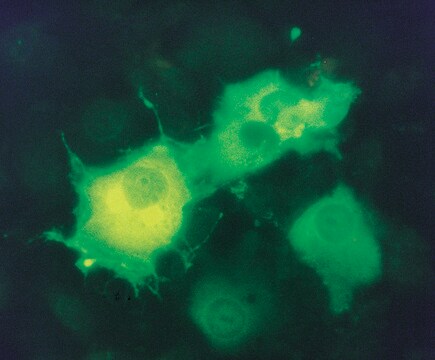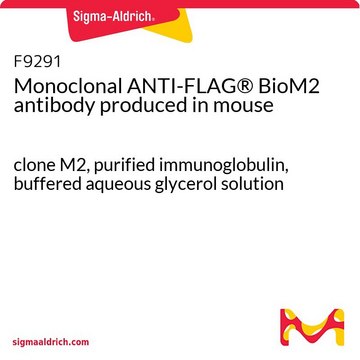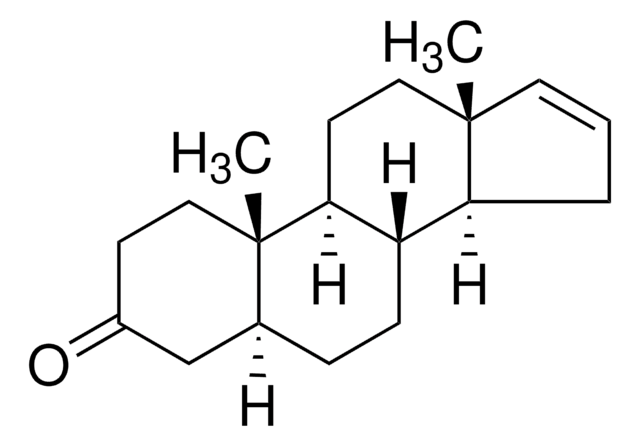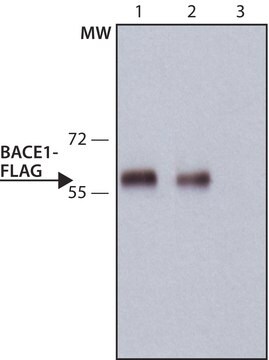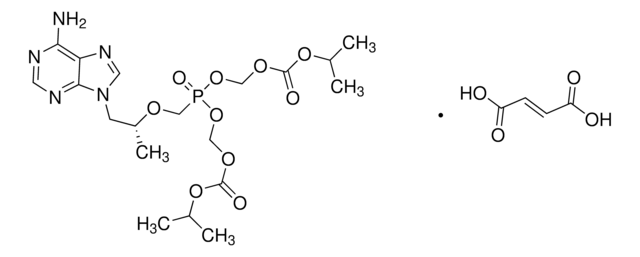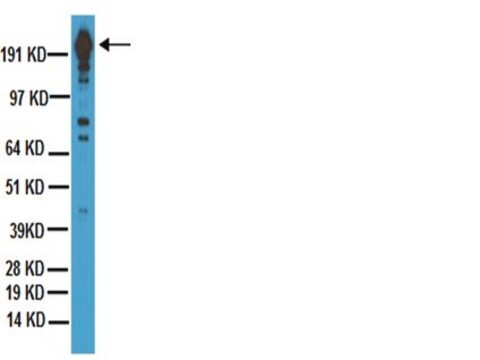A9594
ANTI-FLAG® M2 monoclonal antibody produced in mouse
clone M2, purified immunoglobulin, buffered aqueous solution (Supplied as a solution in 10 mM sodium phosphate)
Sinónimos:
Anti-ddddk, Anti-dykddddk
About This Item
Productos recomendados
biological source
mouse
Quality Level
conjugate
CY3 conjugate
antibody form
purified immunoglobulin
antibody product type
primary antibodies
clone
M2, monoclonal
form
buffered aqueous solution (Supplied as a solution in 10 mM sodium phosphate)
species reactivity
all
concentration
~1 mg/mL
technique(s)
direct immunofluorescence: 10 μg/mL using mammalian cells fixed with methanol:acetone
isotype
IgG1
immunogen sequence
DYKDDDDK
shipped in
dry ice
storage temp.
−20°C
¿Está buscando productos similares? Visita Guía de comparación de productos
General description
Application
Western Blotting (1 paper)
Learn more product details in our FLAG® application portal.
Physical form
Preparation Note
Other Notes
Legal Information
¿No encuentra el producto adecuado?
Pruebe nuestro Herramienta de selección de productos.
Storage Class
10 - Combustible liquids
flash_point_f
Not applicable
flash_point_c
Not applicable
Certificados de análisis (COA)
Busque Certificados de análisis (COA) introduciendo el número de lote del producto. Los números de lote se encuentran en la etiqueta del producto después de las palabras «Lot» o «Batch»
¿Ya tiene este producto?
Encuentre la documentación para los productos que ha comprado recientemente en la Biblioteca de documentos.
Los clientes también vieron
Nuestro equipo de científicos tiene experiencia en todas las áreas de investigación: Ciencias de la vida, Ciencia de los materiales, Síntesis química, Cromatografía, Analítica y muchas otras.
Póngase en contacto con el Servicio técnico